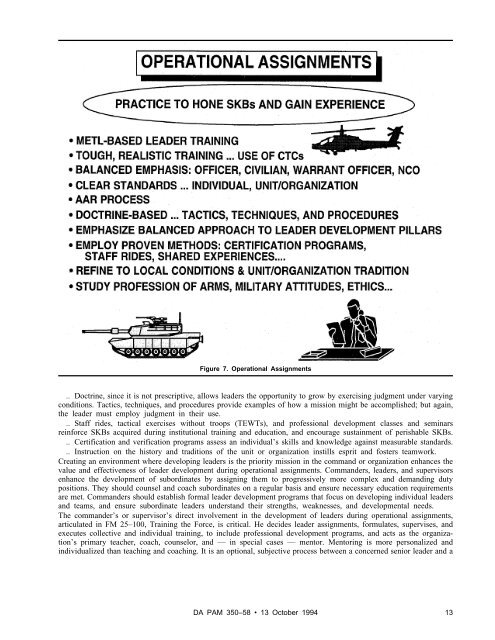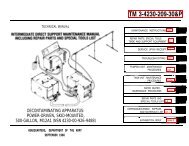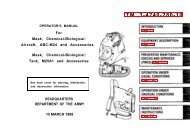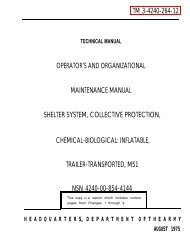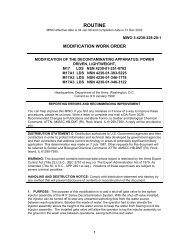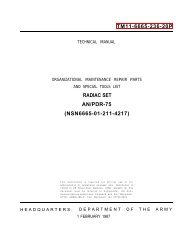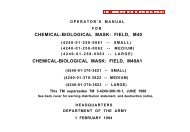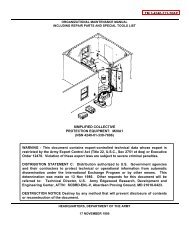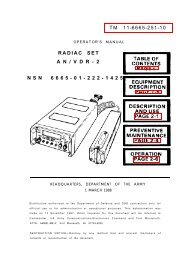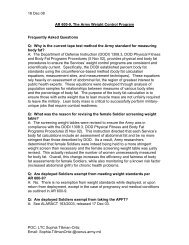LEADER DEVELOPMENT FOR AMERICA'S ARMY
LEADER DEVELOPMENT FOR AMERICA'S ARMY
LEADER DEVELOPMENT FOR AMERICA'S ARMY
Create successful ePaper yourself
Turn your PDF publications into a flip-book with our unique Google optimized e-Paper software.
Figure 7. Operational Assignments<br />
.. Doctrine, since it is not prescriptive, allows leaders the opportunity to grow by exercising judgment under varying<br />
conditions. Tactics, techniques, and procedures provide examples of how a mission might be accomplished; but again,<br />
the leader must employ judgment in their use.<br />
.. Staff rides, tactical exercises without troops (TEWTs), and professional development classes and seminars<br />
reinforce SKBs acquired during institutional training and education, and encourage sustainment of perishable SKBs.<br />
.. Certification and verification programs assess an individual’s skills and knowledge against measurable standards.<br />
.. Instruction on the history and traditions of the unit or organization instills esprit and fosters teamwork.<br />
Creating an environment where developing leaders is the priority mission in the command or organization enhances the<br />
value and effectiveness of leader development during operational assignments. Commanders, leaders, and supervisors<br />
enhance the development of subordinates by assigning them to progressively more complex and demanding duty<br />
positions. They should counsel and coach subordinates on a regular basis and ensure necessary education requirements<br />
are met. Commanders should establish formal leader development programs that focus on developing individual leaders<br />
and teams, and ensure subordinate leaders understand their strengths, weaknesses, and developmental needs.<br />
The commander’s or supervisor’s direct involvement in the development of leaders during operational assignments,<br />
articulated in FM 25–100, Training the Force, is critical. He decides leader assignments, formulates, supervises, and<br />
executes collective and individual training, to include professional development programs, and acts as the organization’s<br />
primary teacher, coach, counselor, and — in special cases — mentor. Mentoring is more personalized and<br />
individualized than teaching and coaching. It is an optional, subjective process between a concerned senior leader and a<br />
DA PAM 350–58 • 13 October 1994<br />
13


